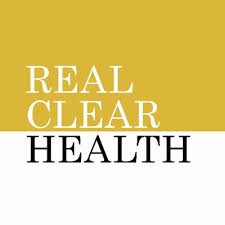
Patients Harmed by 'Cost-Effectiveness' Measures
By Tony Coelho
August 30, 2018
As someone living with epilepsy, I care about making sure drugs are affordable. As both a patient and the lead author of the Americans with Disabilities Act, I care just as much about finding solutions that engage and empower patients and people with disabilities.
Last week, CVS Caremark announced a program that does just the opposite, instead offering up a retread of paternalistic, 20th-century policy that tells patients what they’re worth instead of asking them what they value.
CVS touted its program as an “innovation.” But it is anything but. Under the new policy, CVS would offer employers policies that exclude drugs from their formularies if they exceed a subjective “cost-effectiveness” threshold. CVS would rely on a deeply flawed value assessment model developed by the Institute for Clinical and Economic Review (ICER) in determining whether treatments fall below a $100,000 “cost per quality-adjusted-life-year” limit.
Patient advocates have been down this road before. In the early 1990’s, Oregon proposed using a similar “cost-effectiveness” formula in Medicaid, but ultimately backed away from it in part due to concern that it discriminated against people with disabilities and would violate the Americans with Disabilities Act.
This type of cost effectiveness analysis discriminates against people with disabilities and other vulnerable groups like the elderly because it assigns higher value to people in “perfect health” than people in less-than-perfect health. So let’s say your child has a degenerative neurological condition and an expensive new drug is introduced that can halt, but not reverse, the damage done by the disease. Your child, and other patients like her, would be considered “worth less” under a cost-effectiveness formula. As a result, the new treatment would not meet the threshold.
Scholars readily admit this and other flaws in cost-effectiveness methods such as those proposed by CVS and ICER. In 2015, Professor Peter Singer, a noted proponent of using cost-effectiveness to make health-care coverage decisions, stated in a radio interview that, in deciding whether to provide life-prolonging treatment to severely disabled infants, “it would be reasonable for governments to say, ‘This treatment is not going to be provided’” under Medicare or Medicaid. Policy-makers were so concerned about this during debate of the Affordable Care Act that they included a provision specifically to protect the elderly and disabled in Medicare from misuse of flawed cost-effectiveness standards.
The harmful effects of reliance on a cost-per-QALY metric are far from theoretical. In the United Kingdom, patients have faced serious access barriers to important treatments because their government decided that patients and people with disabilities were not worth it. Just recently, it was announced that, as a result of a government agency’s cost-effectiveness judgment, children in the U.K. suffering from a debilitating genetic condition would not be permitted access to a revolutionary therapy that would halt the progress of their disease.
I am deeply concerned by the movement to adopt similar one-size-fits-all standards in the U.S., whether in private organizations such as CVS or public programs such as New York State’s Medicaid policy.
As policy-makers seek solutions to better value and affordability in health care, the CVS announcement makes one thing crystal clear: They can choose policies that help patients, or policies that help health insurance companies. CVS’s policy is a step down the wrong path. In the year ahead, I am redoubling my efforts to advance reforms that offer real solutions for patients, not just payers.
Health-care payers are missing a tremendous opportunity to improve the health of our nation in a uniquely American way — by making health care about the individual person, based on his or her own characteristics. Are we really putting patients first if we tell patients with disabilities that they are not worth the treatment option that provides them the most value?
